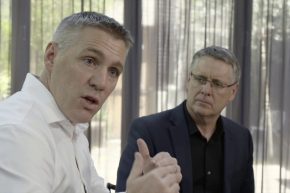Six core practices can help you to control your thoughts and reactions in any situation. Thus, in this Expert Insight Interview, Darcy Luoma discusses the Thoughtfully Fit leadership model of solving people-problems with confidence. Darcy is a founder and CEO of Darcy Luoma Coaching & Consulting firm.
The interview discusses:
- Steps to do internally
- Steps to do externally
Internal Steps
In today’s world, where everyone is so distracted and reactive, there are ways to learn how to be mindful and thoughtful of your actions. The first three steps are internal. Firstly, you should learn how to find stillness in situations when you have so many things to do that you are becoming overwhelmed. The ability to quiet your mind at that moment will help you find creativity and strategy to finish up all the things.
The second step is to practice choosing how you want to show up in situations. Choosing how you will show up at any moment is a sign of power, and it can change the dynamics of your entire life. To do so, you have to master the “pause, think, act” process. Instead of reacting automatically to a given situation, take a pause and think. Think of why this triggers you, how you want to show up, and what you need to do to bring the energy you desire. The pause can be only a couple of breaths or one sip of coffee long, but it will be very beneficial for you because it will enable you to act thoughtfully.
The third step is to find endurance to overcome the feeling of being stuck. This step calls for embracing the growth mindset because only the mindset shift can help you see new opportunities where you once saw no way out.
External Steps
The first external step to do is to find the flexibility to accept others the way they are. The highest performing teams in the top organizations have cultures supportive of diverse styles. Different styles and perspectives create conflicts, and healthy conflicts lead to exploration and innovation.
Furthermore, finding balance in your relationship is an important step to create a win-win situation for both sides. An imbalanced relationship creates feelings of resentment, anger, and overall destruction for one side. Thus, both sides must express and satisfy their wants and needs for the relationship to balance.
And the last step is to practice agility to stop defending yourself and others from reacting poorly. We all have reactions that are typical for us, but we should try to change that behavior. Thus, next time, instead of overreacting, pause for a second and think about how you can thoughtfully react to the situation instead of overreacting.
Our Host
John is the Amazon bestselling author of Winning the Battle for Sales: Lessons on Closing Every Deal from the World’s Greatest Military Victories and Social Upheaval: How to Win at Social Selling. A globally acknowledged Sales & Marketing thought leader, speaker, and strategist, he has conducted over 1500 video interviews of thought leaders for Sales POP! online sales magazine & YouTube Channel and for audio podcast channels where Sales POP! is rated in the top 2% of most popular shows out of 3,320,580 podcasts globally, ranked by Listen Score. He is CSMO at Pipeliner CRM. In his spare time, John is an avid Martial Artist.








Comments